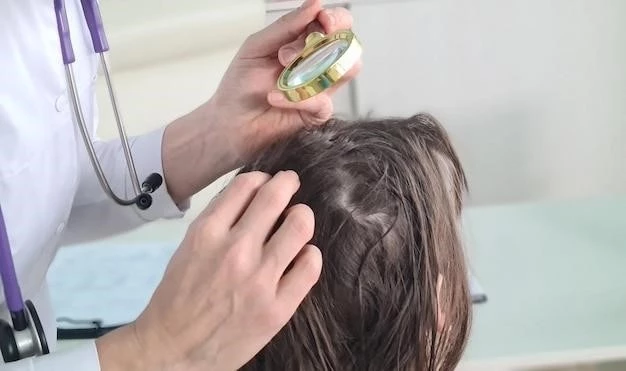Introduction
The scalp defects-postaxial polydactyly syndrome is a rare genetic disorder affecting scalp and limb development.
Scalp defects-postaxial polydactyly syndrome is a rare genetic disorder characterized by congenital defects of the scalp and type A postaxial polydactyly. It involves missing or scarred scalp skin and extra digits on the ulnar side of the hand or foot. The syndrome is extremely rare, with less than five reported cases, making it a unique and challenging condition to manage.
Scalp defects-postaxial polydactyly syndrome is a rare genetic disorder affecting scalp and limb development.
Etiology of the Syndrome
Scalp defects-postaxial polydactyly syndrome is thought to be inherited in an autosomal dominant manner with variable penetrance. There are few reported cases, indicating its rarity and complexity in genetic transmission.
Genetic Inheritance Patterns
Scalp defects-postaxial polydactyly syndrome is believed to exhibit an autosomal dominant inheritance pattern with variable expressivity. Limited documented cases underscore the rarity and genetic complexity of this syndrome.

Symptoms and Clinical Presentation
Patients with Scalp defects-postaxial polydactyly syndrome exhibit skin abnormalities on the scalp and extra digits.
Characteristics of Scalp Defects
Scalp defects in scalp-defects-postaxial polydactyly syndrome present as congenital abnormalities such as missing or scarred skin on the scalp. The associated extra digits manifest as additional fingers or toes on the ulnar side of the limbs. These physical features are key indicators for diagnosing this rare genetic condition.
Features of Postaxial Polydactyly
Postaxial polydactyly is characterized by the presence of extra digits on the ulnar side of the hands or feet, resulting from anomalies in limb development. This feature, often accompanied by other limb malformations, is a key clinical manifestation of Scalp defects-postaxial polydactyly syndrome.
Diagnosis and Differential Diagnosis
Diagnosing Scalp defects-postaxial polydactyly syndrome involves recognizing unique scalp abnormalities and limb malformations.
Diagnostic Procedures
Diagnosing Scalp defects-postaxial polydactyly syndrome typically involves a thorough clinical evaluation, imaging studies like X-rays and ultrasounds, and genetic testing to confirm the presence of associated genetic mutations. Additionally, medical professionals may consider the unique combination of scalp abnormalities and limb malformations to differentiate this syndrome from other similar conditions.
Comparison with Similar Syndromes
When compared to related conditions, Scalp Defects-Postaxial Polydactyly Syndrome stands out due to its unique combination of scalp abnormalities and type A postaxial polydactyly.
Treatment Approaches
Treatment for Scalp defects-postaxial polydactyly syndrome focuses on managing associated symptoms.
Management of Scalp defects-postaxial polydactyly syndrome involves a multidisciplinary approach focusing on addressing physical symptoms and providing supportive care for affected individuals. Treatment may include surgical interventions to manage scalp defects and limb abnormalities, along with ongoing medical follow-up to monitor the condition’s progression.
Management Strategies
Management of Scalp defects-postaxial polydactyly syndrome involves surgical interventions to address scalp defects and limb abnormalities. Patients may also benefit from ongoing medical care and support services to enhance their quality of life.
Prognosis and Complications
The long-term outlook for individuals with Scalp defects-postaxial polydactyly syndrome varies depending on the severity of symptoms.
Long-Term Outlook
The long-term prognosis for individuals with Scalp defects-postaxial polydactyly syndrome is variable, depending on the extent of symptoms and associated complications. Close monitoring and appropriate management strategies are crucial for ensuring the best possible outcomes for affected individuals.
Overview of Scalp Defects Postaxial Polydactyly Syndrome
Scalp defects-postaxial polydactyly syndrome is a rare genetic disorder characterized by congenital defects of the scalp and type A postaxial polydactyly. It involves missing or scarred scalp skin and extra digits on the ulnar side of the hand or foot. The syndrome is extremely rare, with less than five reported cases, making it a unique and challenging condition to manage.
The syndrome is extremely rare, with less than five reported cases, highlighting its scarcity.
Incidence of Scalp Defects Postaxial Polydactyly
The syndrome is extremely rare, with less than five reported cases, underscoring its rarity.
Rarity of the Syndrome
Scalp defects-postaxial polydactyly syndrome is an extremely rare genetic disorder, with fewer than five reported cases, underscoring its scarcity in the medical literature.
Research on Scalp defects-postaxial polydactyly syndrome focuses on understanding the genetic mechanisms and potential treatment options.
Implications for Genetic Counseling
Genetic counseling for Scalp defects-postaxial polydactyly syndrome may involve discussing the autosomal dominant inheritance pattern and providing information about the potential risks of passing on the genetic mutation to offspring. Due to the rarity of the syndrome, genetic counseling plays a crucial role in guiding families on understanding the implications of the genetic defect.
Current Studies and Advancements
Research on Scalp defects-postaxial polydactyly syndrome focuses on understanding the genetic mechanisms and potential treatment options.
Reported cases of Scalp defects-postaxial polydactyly syndrome highlight the variability in expression within affected families.
Reported Cases and Family Studies
Reported cases of Scalp defects-postaxial polydactyly syndrome highlight the variability in expression within affected families.
Observations on Inherited Traits
Studies on the inheritance patterns of Scalp defects-postaxial polydactyly syndrome underscore the variability within affected families and raise questions about the genetic basis of this rare condition.
Support Groups and Resources
For patients and caregivers dealing with Scalp defects-postaxial polydactyly, access support networks offering informational and financial aid.
Available Support Networks
Individuals and families affected by Scalp defects-postaxial polydactyly may benefit from support networks providing guidance and assistance for managing the challenges associated with the condition.
Support Networks and Financial Aid
Support groups provide informational resources and financial assistance to those affected by Scalp defects-postaxial polydactyly syndrome, aiding in managing the challenges associated with the condition.

Recent Developments and Ongoing Studies
Stay informed about the latest research and ongoing studies regarding Scalp defects-postaxial polydactyly syndrome.
Stay informed about the latest advancements and ongoing studies related to Scalp defects-postaxial polydactyly syndrome.
Future Directions in Understanding the Syndrome
Ongoing research aims to further understand the underlying mechanisms and genetic implications of Scalp defects-postaxial polydactyly syndrome to enhance diagnosis and treatment strategies in the future.
Impact on Quality of Life
Understanding the impact of Scalp defects-postaxial polydactyly on individuals’ quality of life is essential for providing comprehensive care and support.
Update on Current Studies
Stay informed about recent developments concerning Scalp defects-postaxial polydactyly syndrome.
Challenges Faced by Affected Individuals
Individuals with Scalp defects-postaxial polydactyly may encounter physical, emotional, and social challenges that require comprehensive support and understanding.
Preventive Measures and Genetic Testing
Individuals with a family history of Scalp defects-postaxial polydactyly may consider genetic screening and counseling.
Options for Genetic Screening
Genetic screening options may be available for individuals with a family history of Scalp defects-postaxial polydactyly to assess the risk of developing or passing on the condition.
Preventative Recommendations
As of 03/25/2024 at 17⁚26⁚56, current information states Scalp defects-postaxial polydactyly syndrome is rare. It involves congenital scalp defects and extra digits on the hands or feet. Understanding the causes, symptoms, and treatments is crucial. Psychological and social challenges faced by individuals require comprehensive support. Genomic testing for families with a history of the syndrome can help assess risks. Researchers focus on genetic mechanisms and treatment options for better management.
Educational Initiatives and Awareness Campaigns
Efforts are underway to raise awareness and educate healthcare professionals about Scalp defects-postaxial polydactyly.
Efforts to Raise Awareness
Educational initiatives and awareness campaigns are essential in disseminating information about the rare Scalp defects-postaxial polydactyly syndrome to the public and healthcare professionals.
Updates in Research
Stay informed about the latest advancements and ongoing studies related to Scalp defects-postaxial polydactyly syndrome.
Scalp defects-postaxial polydactyly syndrome is a rare genetic disorder with distinct phenotypic characteristics.
Summary of Key Points
Scalp defects-postaxial polydactyly syndrome is a rare genetic disorder with distinct phenotypic characteristics.
